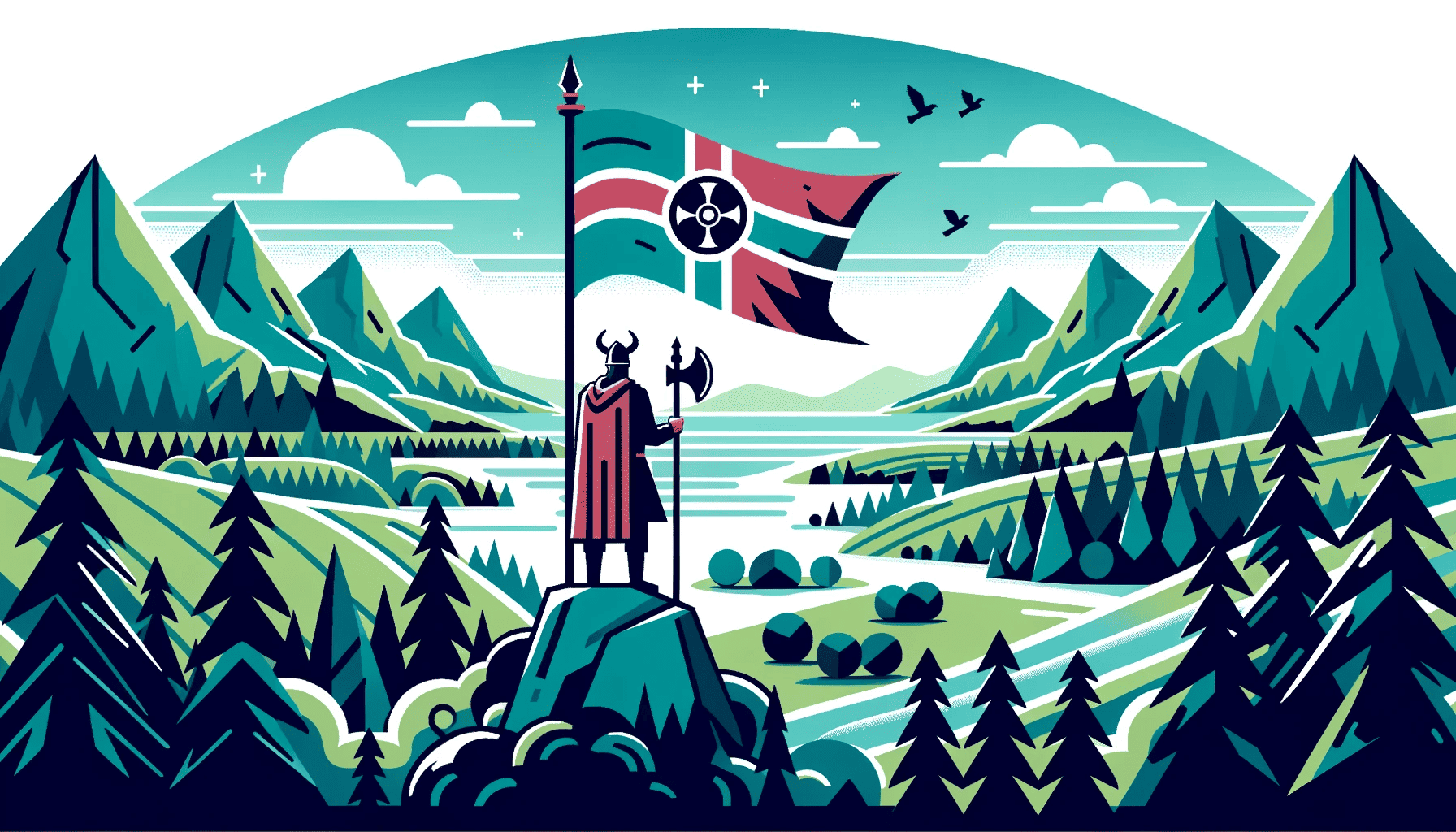
From grade school history books to popular culture, the narrative has often centered on Cristopher Columbus as the pioneering European explorer who uncovered the Americas. However, you might be surprised to learn that Columbus wasn’t the first European to set foot on North American shores.
The Sagas of Icelanders, backed by compelling archaeological findings, tell us that Vikings journeyed from Scandinavia to Newfoundland via Greenland as early as 999 AD. Whispers of their discoveries might have reached the ears of informed Europeans, Columbus possibly among them. We now have evidence this could have been the case.
In a recent study, Paolo Chiesa of the University of Milan documented the first written mention of America in the Mediterranean area. In the “Cronica universalis” penned by Milanese friar Galvaneus Flamma in 1345, Chiesa found a mention of a land named “terra que dicitur Marckalada,” situated west of Greenland. This intriguing reference, Chiesa suggests, paints a picture of a world beyond Greenland known to the Mediterranean before Columbus’s famed voyage, a whole 150 years earlier!
“Galvaneus’s reference, probably derived by oral sources heard in Genoa, is the first mention of the American continent in the Mediterranean region, and gives evidence of the circulation (out of the Nordic area and 150 years before Columbus) of narratives about lands beyond Greenland,” Chiesa wrote in the study published in the Journal of the Society for the History of Discoveries.

This “Marckalada” refers to Markland, a name given by Icelandic sources to a stretch of North America’s Atlantic coast. The mention of Markland occurs in the third book, which discusses the third age of humankind from Abraham to David. At one point, the Middle Age author “inserts a long geographical excursus, mainly dealing with exotic areas: the Far East, Arctic lands, Oceanic islands, Africa,” Chiesa says.
In his texts, the Milanese friar employs a variety of sources, ranging from biblical to scholarly treatises, including the accounts of travelers the likes of Marco Polo and Odoric of Pordenone. Galvaneus ascribed his description of Markland to the oral testimony of sailors who traveled the seas of Denmark and Norway, which was most likely passed down to the friar by seafarers in Genoa. The port of Genoa was the nearest to Milan and was the city where the medieval scholar studied for his doctorate.
The full text mentioning Markland, what we now know as North America, was translated from Latin to English and reads as follows:
“Further northwards there is the Ocean, a sea with many islands where a great quantity of peregrine falcons and gyrfalcons live. These islands are located so far north that the Polar Star remains behind you, toward the south. Sailors who frequent the seas of Denmark and Norway say that northwards, beyond Norway, there is Iceland; further ahead there is an island named Grolandia, where the Polar Star remains behind you, toward the south. The governor of this island is a bishop. In this land, there is neither wheat nor wine nor fruit; people live on milk, meat, and fish. They dwell in subterranean houses and do not venture to speak loudly or to make any noise, for fear that wild animals hear and devour them. There live huge white bears, which swim in the sea and bring shipwrecked sailors to the shore. There live white falcons capable of great flights, which are sent to the emperor of Katai. Further westwards there is another land, named Marckalada, where giants live; in this land, there are buildings with such huge slabs of stone that nobody could build with them, except huge giants. There are also green trees, animals and a great quantity of birds. However, no sailor was ever able to know anything for sure about this land or about its features.”
“From all these facts it is clear that there are settlements at the Arctic pole.”

The mentions of America are vague compared to those of Iceland and Greenland and even involve myth and hyperbole such as the land “where giants live”. This mention is likely owed to Galvaneus’ second-hand sources, which distorted information.
Chiesa mentions in the study that the “huge stones” reference may refer to Helluland from the Viking sagas, which mention that Icelandic explorer Thorfinn Karlsefni “found many slabs of stones so huge that two men could stretch out on them sole to sole.” Giants are also common in Old Norse epic myths and legends.
The fact that the friar knew about Greenland in such stunning detail, a region that was very obscure to most 14th-century people living in south-central Europe, is very remarkable.
“Although the papal curia was aware of the existence of Greenland since the eleventh century, Galvaneus is the first to give some information about its features in the Italian area, and, more generally, in a Latin “scientific” and encyclopedic work, as his Cronica universalis claims to be,” the study mentions.
Could Columbus, a native of Genoa, have been privy to these detailed accounts? Perhaps his audacious voyage across the ocean, deemed foolish by many of his peers, was inspired by sources hinting at a vast, uncharted continent lying in wait to the west.
This article originally appeared in 2022 and was updated with new information.









